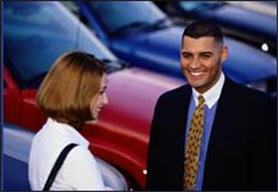Every Car Enthusiast Should Drive An Evolution Before He Dies!
 "Hey, Dad, can I have the car tonight, mine's not running right." That's the sort of young-driver comment the 2005 Mitsubishi Lancer Evolution MR is likely to inspire.
"Hey, Dad, can I have the car tonight, mine's not running right." That's the sort of young-driver comment the 2005 Mitsubishi Lancer Evolution MR is likely to inspire. That's because the MR is — to make it as simple as possible — a family-oriented four-door with sports car performance.
It is so sporty that winding its turbocharged four-cylinder engine to its 7,000 rpm redline and making speedy shifts through its six-speed manual transmission will get you to the speed limit in a rush.
Torque steer has been engineered out of most of today's new cars, but the test Evolution MR generated some despite being an all-wheel drive car.
The MR may have a relatively bland exterior, but push the parameters of its performance, and you're likely to find yourself catching the attention of the folks who enforce speed limits. This thing will fly.
The MR's speed does not come cheap, although milder Lancer/Evolution variants are available.
There are, needless to say, quite a few family-oriented, sporty and utilitarian vehicles out there at that price. But opt for the MR, and you get a serious sprinter.
Turning the Evolution MR over to an unproven, young driver who hasn't had professional lessons or guidance from a polished-driver parent would be a serious mistake. The car has good safety features, including anti-lock brakes but needs a driver who won't take its power for granted.
Understand that what we're talking about here is a family-style four-door that can rocket to 60 mph in 5-plus seconds. Better use the cargo net for groceries in the trunk because the Evolution MR has riding-on-rails handling to go with its potent performance.
The interior has way more appeal than the exterior. Leather, upscale stereo and all the power goodies expected when spending this sort of money are all there.
Rear seat occupants aren't going to feel too crowded, but the front is more appealing and occupant-friendly.
For starters, the body-gripping front bucket seats are by Recaro, a revered name in enthusiast circles, and, once ensconced, the driver is going to be looking at a steering wheel by Momo, another brand that is appreciated by aftermarket shoppers.
Lancers come with 2.0-liter and 2.4-liter four-cylinder engines rated at about 120 and 162 hp respectively. The MR, meanwhile, gets a turbocharged 2.0 liter four-cylinder engine with 16 valves that makes 270-something hp with 280-something pounds-feet of torque.
The MR comes with red-on-black instrumentation that looks nice but can be difficult to read at night. Little else about the interior layout and trim is objectionable, assuming you keep in mind it started life as an econocar. Once up to MR status, though, the Lancer Evolution MR becomes much more than an econobox, and you, too, will agree with Automobile magazine's summation: "Every car enthusiast should drive an Evo before he dies."









